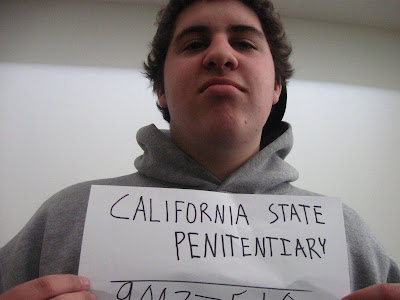Tuesday, May 18, 2010
Cartagena & Gronsky
http://www.aperture.org/apertureprize/2009-3.php
Alejandro Cartagena is from Monterrey, Mexico. It is also where the photos were taken. At least in his series Lost Rivers, Alejandro used landscape and reflection of water along with scarce animal life to get his point across. The images are about the interdependence of man, and the ecosystems around him. Cartagena uses subtle evidence of the presence of man to show how man has interrupted the fragile nature of the ecosystem which is photographed. In this photo, one can see some sort of manmade structure on the left bank, and a set of possible tire tracks on the left as well. Cartagena used shape, shadow and light in order to arrange a masterful image.
Alexander Gronsky: http://www.aperture.org/apertureprize/2009-1.php
http://www.aperture.org/apertureprize/2009-1.php
Gronsky comes from Moscow, Russia, a cold and desolate place. All of his photos in the series show the distant city, as well as a sense of serenity and peace in nature. Gronsky took advantage of the striking whiteness of snow, making his subjects pop out and become detached from the nature. Like Cartagena, Gronsky focused on man’s integration and into a unique ecosystem. However Gronsky also conveyed how humans can never truly be one with nature. Gronsky’s pictures have a depressing, emotionless feel. He arranges his elements in a very layered fashion: Snow, subject, trees, sky, and city. This gives the view many elements to focus on.
Monday, May 17, 2010
Mara


Her best photos are her grid photos, and her Chinatown pictures, which especially exhibit her complex style. Her photos speak for themselves:
Zoe


Zoe’s series that demonstrate her eye are her grid project part 2, and her faces series because she used connecting people, and inanimate objects. In her faces series she looked at big and small objects and sucked emotion out of them.
Benny


Benny’s best series that shows how his photographic eye works best are his raindrops series and his emotions series. His raindrops series is a classic Benny series, as he used the luminosity and freshness of water and the simple beauty of flowers to create various masterpieces. His emotions series uses great set up and shadow/light/contrast.
Tuesday, May 11, 2010
Griffin Shafer


Griffin's strongest photos are the one's he feels most strongly about. One can tell what Griffin really cares about by the masterful images he finds with his photographic eye. Griffin's best photos are the ones of his dog and cat, and the ones in his San Francisco series.
Monday, May 10, 2010
Monday, May 3, 2010
Garry Winogrand


Garry Winogrand was born in New York city on January 14th, 1928 in New York City. Winogrand is most famous for the portrayal of American life in the early 1960s. He was influenced by Robert Frank and Walker Evans. Many of his photographs reflect the social issues of his time and relate to how the media was shaping American attitudes. Since his death, Winogrand’s photographic style of using the energy of the event to charge the photograph his been copied countless times.


Robert Frank was born on November 9, 1924 in Zurich Switzerland. He started photographing to escape from the business-like compounds of his home. His first photo book 40 Fotos was created in 1946, and marked the start of his photographic career. In 1947 Frank emigrated to New York and worked as a photojournalist for various magazines. His photos reflect the outsider’s view of America, as well as American life post WWII. Frank is a master at connecting shapes, patterns and lines in his photography.














